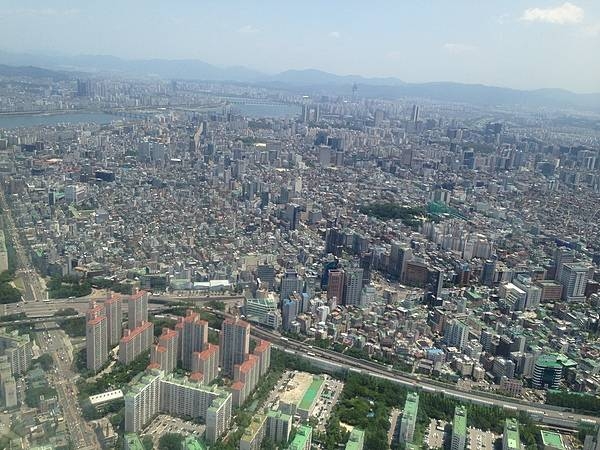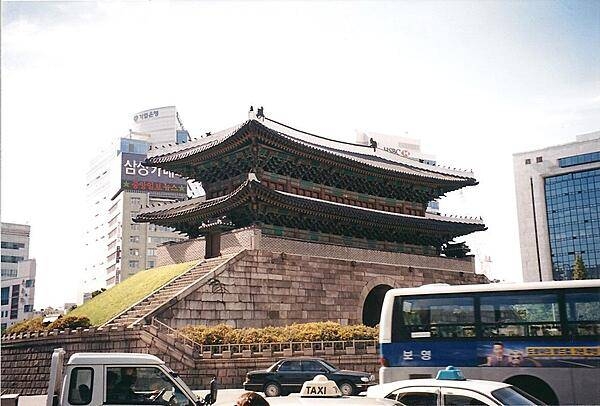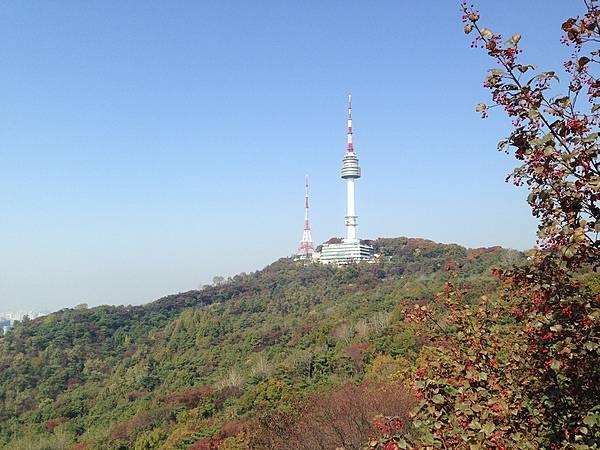Korea, South
Photos
57 Photos
Per Page:
Filter Categories
All
Filters
Satellite image shows North and South Korea (upper left) as well as the Japanese island of Shikoku, nestled between Kyushu to the southwest and Honshu to the north. Photo courtesy of NASA.

The central provinces of South Korea were crippled when heavy snow closed roads throughout the region, including many in the country's capital, Seoul. More snow fell on 6 March 2004, than ever recorded for a single March day in Korea since record keeping began in 1904. According to news reports, the city of Taejon received 49 cm (19 in) of snow on Friday, with an additional 15 cm (6 in) forecast for Saturday. The image shows the storm moving away from the peninsula on 7 March 2004, leaving much of South Korea under a blanket of snow. Image courtesy of NASA.

Seoul as seen from the air.

Entrance way to Cheongwadae or the Blue House (literally "pavilion of blue tiles”), the former executive office and official residence of the president of the Republic of Korea. In May of 2022, the president of South Korea moved his residence to the Ministry of National Defense Building in Seoul. Cheongwadae and its grounds were converted into a public park and opened to visitors for the first time in the country's history.

Closer view of Cheongwadae or the Blue House (literally "pavilion of blue tiles”), the former executive office and official residence of the president of the Republic of Korea. In May of 2022, the president of South Korea moved his residence to the Ministry of National Defense Building in Seoul. Cheongwadae and its grounds were converted into a public park and opened to visitors for the first time in the country's history.

Gyeongbokgung royal palace in northern Seoul. First constructed in 1394, it was reconstructed in 1867.

Namdaemun (Sungnyemun) in Seoul was the "Great Southern Gate" in the walls that once surrounded the city. This view was taken before the wooden upper portion was destroyed in a 2008 fire and subsequently restored.

Namdaemun (Sungnyemun) in Seoul was the "Great Southern Gate" in the walls that once surrounded the city. This view was taken after the restoration of the upper wooden section that was destroyed in a 2008 fire.

Statue of Admiral Yi Sun-Sin (1545–98) in Seoul. Yi was a Korean admiral and military general famed for his victories against the Japanese navy during the Imjin War (Japanese Invasions) from 1592-98. Yi became an exemplar of conduct for both the Koreans and Japanese. Incredibly, despite the fact that he had no prior naval training, Admiral Yi was never defeated at sea nor lost a single ship under his command to enemy action; military historians have placed him on par with Admiral Horatio Nelson as one of the greatest naval commanders in history.

Namsan (Nam Mountain) is a 262 m (860 ft) high peak overlooking Seoul. It offers hiking, picnic areas, and views of downtown Seoul's skyline. The N Seoul Tower (236 m ; 774 ft), located on top of Mt. Namsan, marks the second highest point in Seoul and serves as both a communication and observation tower.

View of Seoul as seen from Nam Mountain.

The salvaged remains of the Republic of Korea Navy ship Cheonan on display in a memorial museum in Pyeongtaek. The vessel sank on 26 March 2010 off the country's west coast near Baengnyeong Island in the Yellow Sea, killing 46 of 104 seamen. The cause of the sinking remains in dispute, but an investigation carried out by a team of international experts from South Korea, the US, the UK, Canada, Australia, and Sweden concluded on 20 May 2010 that the warship had been sunk by a North Korean torpedo fired by a midget submarine.

Page 01 of 05